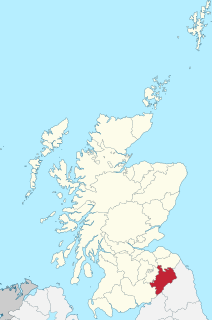
Roxburghshire or the County of Roxburgh is a historic county and registration county in the Southern Uplands of Scotland. It borders Dumfriesshire to the west, Selkirkshire and Midlothian to the north-west, and Berwickshire to the north. To the south-west it borders Cumberland and to the south-east Northumberland, both in England.

Musselburgh is the largest settlement in East Lothian, Scotland, on the coast of the Firth of Forth, 5 miles (8 km) east of Edinburgh city centre. It has a population of 20,840.

East Linton is a village and former police burgh in East Lothian, Scotland, situated on the River Tyne and A199 road five miles east of Haddington, with an estimated population of 1,810 in 2016. During the 19th century the population increased from 715 inhabitants in 1831 to 1,042 by 1881. The 1961 census showed the village had a population of 1,579. The number dropped significantly at the end of the 20th century, but has subsequently risen again.

Coldingham is a village and parish in Berwickshire, Scottish Borders, on Scotland's southeast coastline, north of Eyemouth.
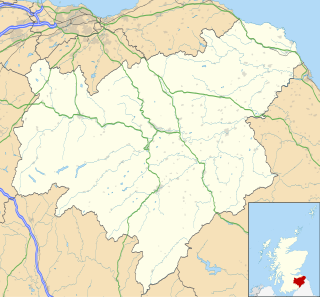
Ancrum is a village in the Borders area of Scotland, 5 km north west of Jedburgh.
John Douglas was Archbishop of St. Andrews from 1572 to 1574. As was tradition from the fifteenth to the seventeenth centuries, the Archbishop would take on the role of Chancellor of the University of St Andrews, as the University had strong links with the Pre-Reformation church.

Lilliesleaf is a small village and civil parish 7 miles (11 km) south east of Selkirk in the Roxburghshire area of Scottish Borders of Scotland.

Minto is a village and parish in the Scottish Borders area of Scotland in Roxburghshire county. It is located 6 miles north-east of Hawick, north of the River Teviot.
Rev Dr Hew Scott DD (1791–1872), was a minister of the Church of Scotland parish of Anstruther Wester. He is largely remembered as a religious researcher and author. His "magnum opus" is the all-comprehensive, multi-volume work, Fasti Ecclesiae Scoticanae: The succession of ministers in the parish churches of Scotland, from the reformation, A.D. 1560, to the present time. This is a detailed, biographical record of each of the ministers of each of the parishes of the Church of Scotland from 1560 to 1870.. It was first published between 1866 and 1871 but it is regularly updated by the Church of Scotland. It is used extensively by historians and genealogists. Scott has numerous other books of history and biography to his credit.

David Dickson was a Church of Scotland minister and theologian.
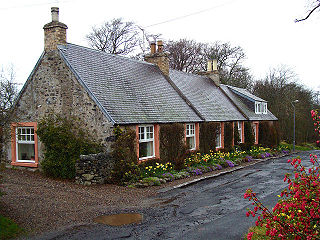
Smailholm is a small village in the historic county of Roxburghshire in south-east Scotland. It is at grid reference NT648364 and straddles the B6397 Gordon to Kelso road. The village is almost equidistant from both, standing 6 miles (10 km) northwest of the abbey town of Kelso. Since local government reorganisation in Scotland in the early 1970s, Smailholm has been part of the Scottish Borders Council.

Stichill Kirk is an ancient church situated in the village of Stichill in the old county of Roxburghshire, now part of the Scottish Borders Council in Scotland. The village lies 2 miles (3.2 km) north of the abbey town of Kelso on the B6643 road and is at grid reference NT713383.
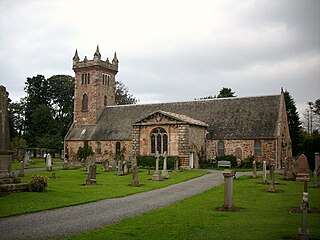
Dirleton Kirk is situated to the north of the village green in Dirleton, in East Lothian, Scotland. Dirleton village lies on the south shore of the Firth of Forth 21 miles east of Edinburgh and two miles west of North Berwick on the A198 road. The church is at grid reference NT512842.

Chirnside Parish Church is a kirk of the Church of Scotland. It is situated on the B6355 road between Duns and Eyemouth in the old county of Berwickshire, now part of the Scottish Borders, at grid reference NT869560. The town of Chirnside is 6 miles (9.7 km) east of Duns, and 9 miles (14 km) north-west of Berwick-upon-Tweed.

The Ale Water is a tributary of the River Teviot, in the Scottish Borders area of Scotland. It rises at Henwoodie Hill and flows through Alemoor Loch. It meets the Teviot south of the village of Ancrum, and it runs through Ashkirk and Lilliesleaf. At Ancrum the depth of the water is between 0.26 metres (0.85 ft) and 2.24 metres (7.3 ft), although was as deep at 2.88 metres (9.4 ft) on one occasion in 2002.

Henry Hardy was a Scottish architect operational in the late 19th century and principal partner of the firm Hardy & Wight. He was also a member of the Royal Scottish Academy as an accomplished landscape artist. He was involved in various City Improvement Schemes in Edinburgh including George IV Bridge and Johnston Terrace and also specialised in church design.
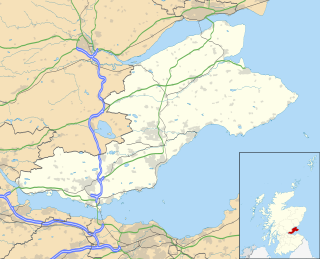
Scoonie is a settlement and parish in Fife, Scotland, the parish contains the town of Leven. It is bordered on the north by the parishes of Kettle and Ceres, on the east by the parish of Largo, on the south by the parishes of Markinch and Wemyss, and on the west by the parishes of Markinch and Kennoway. It extends about 4+1⁄2 miles north to south. Its width varies between 5⁄8 and 2+3⁄4 mi . The parish is on the coast of the Firth of Forth, with a coastline of about 1+1⁄2 mi (2.4 km) The area of the parish is 4,107 acres.

Skirling is a parish, community council area and village in Peeblesshire in the Scottish Borders situated 2½ miles east of Biggar in Lanarkshire. Biggar Water, a tributary the River Tweed forms the southern boundary of the parish with the parish of Broughton, Glenholm and Kilbucho. It is also bounded by that parish on the east, namely the Broughton part of it. On the north it is bounded by the parish Kirkurd in Peeblesshire. Spittal Burn forms most of its western boundary with Lanarkshire.

Corstorphine Old Parish Church, formerly St. John's Collegiate Church, is at the old centre of Corstorphine, a village incorporated to the west area of Edinburgh. Built in the 15th century, in the churchyard of a 12th-century or earlier chapel, the former collegiate church was listed category A by Historic Scotland on December 14, 1970.

John Livingstone or Livingston was born in Kilsyth, on 21 June 1603. He was the son of William Livingstone, minister of Kilsyth, and afterwards of Lanark, said to be a descendant of the fifth Lord Livingston. His mother was Agnes, daughter of Alexander Livingston, portioner, Falkirk, brother of the Laird of Belstane.



















